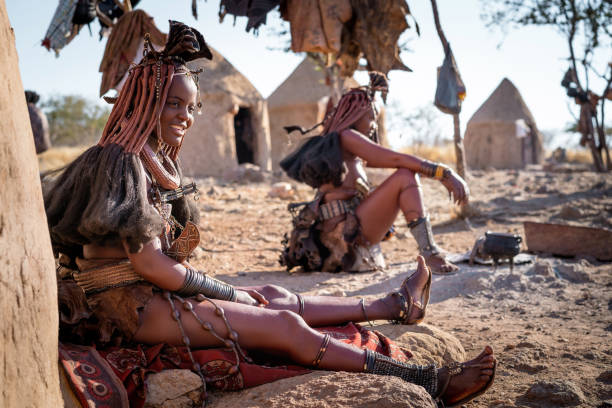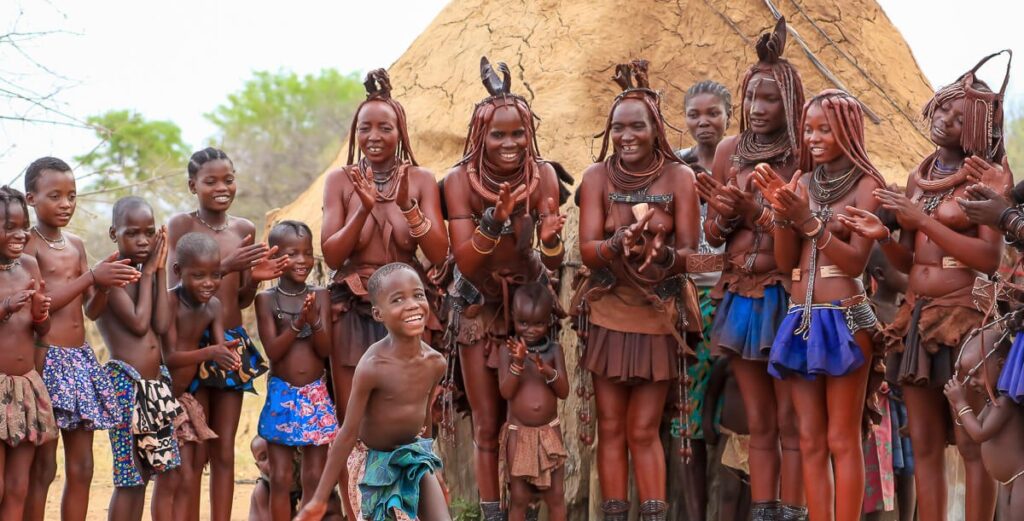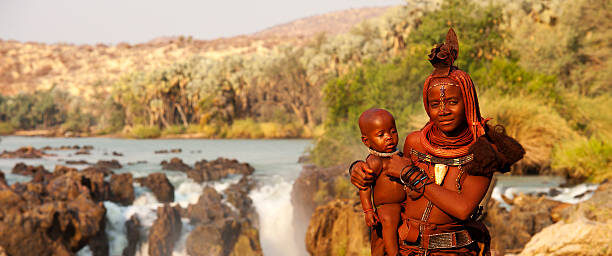
The Himba people, indigenous to the arid landscapes of Namibia, have maintained their unique way of life for centuries. Their nomadic traditions, distinctive attire, and deep connection to the land make them a remarkable cultural group. In this article, we explore the Himba’s nomadic lifestyle, their customs, and their enduring relationship with the harsh but beautiful Namibian desert. They are semi-nomadic pastoralists, primarily relying on cattle herding and agriculture for their sustenance
Their traditional huts, known as “erkers,” are constructed from a mixture of mud, dung, and straw, creating a distinct conical shape. These huts are portable, allowing the Himba to move their homes as they follow grazing opportunities for their livestock. This nomadic lifestyle is a testament to their adaptability and resilience in one of the world’s most challenging environments.

The Himba are renowned for their unique appearance, characterized by the application of otjize, a mixture of red ochre and butterfat, to their skin and hair. This practice not only serves as protection against the harsh desert sun but also holds cultural and spiritual significance. The red color symbolizes the earth’s rich red soil and connects the Himba to their ancestors and the spiritual world.

Himba women also adorn themselves with intricate jewelry and hairstyles that convey information about their age and marital status. The Himba’s nomadic traditions and distinctive appearance make them a living testament to the diversity and resilience of African cultures in the face of modernization.


